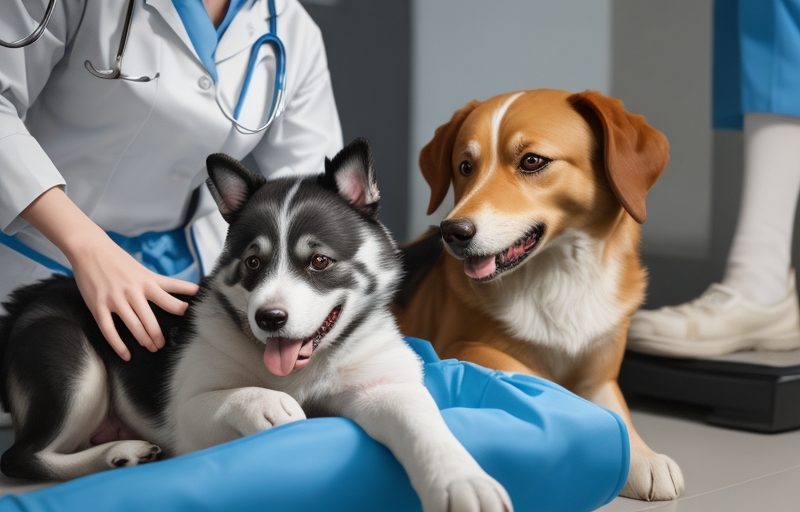Discover the 12 things you should avoid doing at the vet’s office to ensure a smooth and positive visit. Visiting the vet is crucial for your pet’s well-being, but certain actions can make the experience stressful for both your furry friend and the veterinary staff.
Introduction:
A trip to the vet is an essential aspect of responsible pet ownership. Whether it’s for a routine check-up, vaccinations, or addressing health concerns, these visits are crucial for maintaining your pet’s well-being. However, the vet’s office can be a stressful environment for animals, and certain actions can make the experience even more challenging. To ensure a positive and smooth visit, here are 12 things you probably shouldn’t do at the vet’s office.
12 things you should avoid doing at the vet’s office
Arriving Late:
Being punctual is not only respectful but also crucial when visiting the vet. Late arrivals can disrupt the schedule, causing inconvenience for both the veterinary staff and other pet owners.
Not Bringing Medical History:

Your pet’s medical history is vital for the vet to provide the best care. Failing to bring relevant records can hinder the diagnosis and treatment process. Maintain a file with vaccination records, past illnesses, and medications.
Skipping the Leash or Carrier:
For safety reasons, always use a leash or a carrier, even if your pet is well-behaved. The vet’s office can be overwhelming, and unexpected situations may arise. Keeping your pet restrained ensures the safety of everyone involved.
Overfeeding Before the Appointment:
While treats are excellent for positive reinforcement, overfeeding before a vet visit may lead to digestive issues or discomfort. Stick to your pet’s regular feeding routine to avoid unnecessary complications during the examination.
Ignoring Basic Grooming:
A clean and well-groomed pet is easier for the vet to examine. Neglecting basic grooming, such as brushing or trimming nails, can make the vet’s job more challenging and potentially uncomfortable for your pet.
Not Respecting Other Pets:
The waiting room can be a tense environment for some pets. Keep a safe distance from other animals to prevent potential conflicts. Not all pets get along, and some may feel threatened or anxious near others.
Withholding Information:
Be honest and thorough when providing information about your pet’s behavior and health. Any detail, no matter how small, can be crucial for an accurate diagnosis. If your pet has exhibited unusual behaviors or symptoms, make sure to communicate them to the vet.
Letting Children Run Wild:

While involving children in the care of pets is commendable, it’s essential to teach them proper behavior at the vet’s office. Running, shouting, or mishandling pets can create chaos and stress for everyone.
Disregarding Pre-Appointment Instructions:
Some veterinary appointments may come with specific instructions, such as fasting before a procedure. Ignoring these instructions can compromise the effectiveness of the visit and potentially harm your pet.
Assuming the Vet Knows Everything:
While veterinarians are highly trained, they may not be aware of all the nuances of your pet’s behavior or living conditions. Provide context and details that might help the vet understand your pet’s overall well-being better.
Neglecting Follow-up Care:
After a vet visit, your pet may require follow-up care, medication, or additional visits. Neglecting these recommendations can hinder the recovery process and may lead to more severe health issues.
Not Being Prepared for Bad News:

Veterinary visits are not always filled with good news. Be emotionally prepared for the possibility of receiving difficult information about your pet’s health. Consult with the vet about the best course of action and potential treatment plans.
Conclusion
In conclusion, a positive vet visit is crucial for your pet’s health and well-being. By avoiding these common mistakes, you can contribute to a stress-free experience for both your furry friend and the veterinary staff. Remember, open communication and preparation are key to a successful vet visit.
FAQs:
Q1: Why is it essential to bring my pet’s medical history to the vet?
Your pet’s medical history helps the vet understand its health background, aiding in accurate diagnoses and effective treatments.
Q2: Can I bring my pet’s favorite toys to the vet’s office?
While bringing familiar items can provide comfort, be mindful of potential contamination. Consult with the vet before introducing toys into the examination area.
Q3: What should I do if my pet becomes anxious at the vet’s office?
Inform the veterinary staff about your pet’s anxiety, and consider discussing potential strategies for calming your pet during visits.
